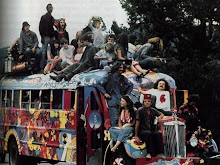The most common type of bond between two atoms is the covalent bond. A covalent bond is formed when two atoms share a pair of electrons. If both atoms have the same electronegativity or tendency to attract electrons, the bond is non polar covalent. When atoms have different electronegativities, the electrons are attracted to the atoms with the higher electronegativity. The bond that forms is polar covalent. Molecules made up of covalently bonded atoms may themselves be polar or non polar. If the polar bonds are symmetrical around the central atom, the bonds offset each other and the molecule is non polar. If the polar bonds are not symmetrical, the electrons will be pulled to one end of the molecules and the molecule will be polar. Many physical properties of the matter are the result of the shape and polarity of the molecule. Water, for example, has unusual properties that can only be explained by the shape of its molecular and t he distribution of the charge on the molecules. In this experiment we built models of the molecules and also predicted their polarity based on their initial shape.
 CH4
CH4

 C3H8
C3H8 
 Si2H6
Si2H6 

H2O

 N2
N2


Experiment: The experiment had us construct models for the molecules, we determined the molecular shapes, and predicted polarity of the molecules. The materials used during the lab was a molecular model kit.
Procedure: First- We built a models for each of the the molecules listed on our worksheets that included the following: CH4, BF3, C3H8, H2O, Si2H6, HF, CH3NH2, H2O2, N2, SeF4, C2H4, SiH2O, IF3, SF6, CO2, and (SO3)-2. Second- We drew three-dimensional structures of each molecules in a table. Third- We noted the shape of each of the molecule in the third column in the table. We also determined the bond angle, polarity, and resonance for every molecular formula.
No safety
Conclusion:We learned more about the physical appearance and molecular geometry of normally 2 dimensional shapes on paper.
 CH4
CH4
 C3H8
C3H8 
 Si2H6
Si2H6 

H2O

 N2
N2

Experiment: The experiment had us construct models for the molecules, we determined the molecular shapes, and predicted polarity of the molecules. The materials used during the lab was a molecular model kit.
Procedure: First- We built a models for each of the the molecules listed on our worksheets that included the following: CH4, BF3, C3H8, H2O, Si2H6, HF, CH3NH2, H2O2, N2, SeF4, C2H4, SiH2O, IF3, SF6, CO2, and (SO3)-2. Second- We drew three-dimensional structures of each molecules in a table. Third- We noted the shape of each of the molecule in the third column in the table. We also determined the bond angle, polarity, and resonance for every molecular formula.
No safety
Conclusion:We learned more about the physical appearance and molecular geometry of normally 2 dimensional shapes on paper.



